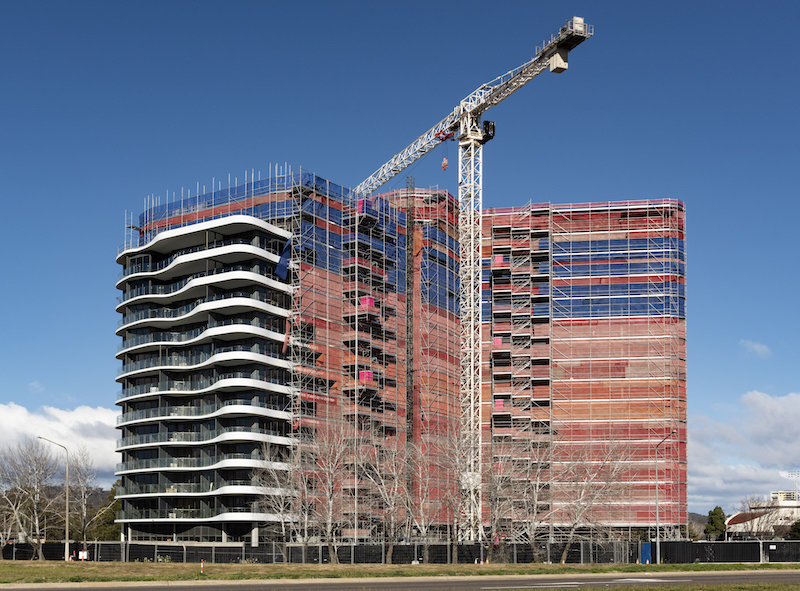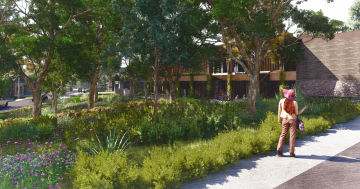
The development application process can be improved for all those involved. Photo: File.
It took more than two years and chewed through several MLAs but the Legislative Assembly’s Planning and Urban Renewal (PUR) Committee finally handed down its report into the development application process last week.
If ever there was a perennial issue in the national capital it would be planning but it depends on your perspective whether that is a good thing or not.
For government, finding the right balance in a city of relatively well organised and informed community activists on one side, and the development industry that contributes so much to the ACT’s economy and coffers on the other has always been problematic.
But the committee’s work, less a report than a list of recommendations, shows that the critical area of how development applications are submitted, assessed and approved (or not) isn’t up to scratch.
Many consider that the Planning Directorate (or to give it its full title, the Environment, Planning and Sustainable Development Directorate) is limited to a box-ticking role due to a lack of expertise and resources.
The cross-party committee came up with a monumental 66 recommendations, many of which, as chair Caroline Le Couteur says, are common sense and should have already been adopted.
These include extending consultation periods over the Christmas holiday break and DAs remaining accessible on the Directorate website after consultation ends.
The committee also recommends that the Directorate utilises social media avenues to notify the community of DAs that are likely to be of wide community interest. That should also extend to letting the public know the outcome of controversial applications, rather than limiting notification to those who had made a representation.
The Directorate simply has not increased its capability for interaction that technology can now afford.
The recommendations seek to make it easier for the community to interact with the planning system, and to offer greater protections for the environment and amenity but also to speed up the process, something that developers themselves have been urging for some time.
The committee calls for the government to further boost directorate resources to reduce assessment times.
But there is no doubt some recommendations will receive serious pushback from industry and government, particularly in these uncertain times when construction is being touted as one of the key vehicles to reignite the shell-shocked economy.
The fewer roadblocks the better is likely to be the sentiment.

Committee chair Caroline Le Couteur: Many recommendations should already be in place. Photo: Supplied.
A proposal to fund the Combined Community Councils of the ACT or the Environment Defenders’ Office to provide an advisory service to help community members engage ”effectively” with DAs and other planning processes is unlikely to be adopted, although strapped councils often talk about the one-sided fights they get into.
And the call for a pool of government-appointed independent environmental experts to check Environmental Impact Statements so conflicts of interest can be minimised is likely to labelled ‘green tape’.
A review of the Heritage Council and Heritage Unit to ensure they are adequately resourced would be welcome but this is an area that seems to receive less and less priority as the years pass.
Ms Le Couteur, who is the sole survivor of the original committee that began its work in March 2018, also sought to expand appeal rights but that proved a bridge too far for the other members.
She also wanted the government to appoint certifiers for shoddy builders, and changes to the planning rules so development that may damage the amenity of existing neighbourhoods in low-rise zones could be blocked.
These too failed to make the cut.
But there is more than enough for the government and the directorate to digest and act on to improve the DA experience.
It should start with consolidating the added resources recently deployed to deal with a backlog of applications and beef up the planning directorate with the expertise it needs to not just assess but ensure quality urban development.
There should also be even more focus on pre-DA consultation to set clear expectations for developers and nip issues in the bud, so long as the goalposts aren’t shifted later.
The interface and communication issues should be easy enough to fix, and there is no reason why access to and the tracking of DAs should be so opaque.
It is unlikely that a system that satisfies everyone can be achieved but, after all this time and 66 recommendations, it can be made better to meet the needs of a growing city.
Download The Inquiry into Engagement with Development Application Process in the ACT.




















